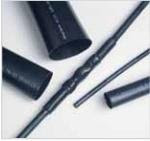I understand that through some kind of unlikely chain of events, the plant is currently unable to supply WCSM 24/6-1200-S for 5-6 weeks. I can also understand what a huge problem this can be for many customers out there.
We currently have this part available and ready to ship. Actually, we have the previous size (WCSM 20/6-1200-S) available to ship (I think I have ~1800 pieces - all 4 feet long; so 7200 feet of material).
The only difference between the WCSM 24/6 and the WCSM 20/6 is that the 20/6 is supplied with a 4mm smaller ID. It will still work exactly the same and shrink down to the same wire sizes. WCSM 20/6 was the standard part for many, many years until Tyco decided to supply the tube a little larger a few months back. So - call us today - 936/321-3333 for a quote.
We currently have this part available and ready to ship. Actually, we have the previous size (WCSM 20/6-1200-S) available to ship (I think I have ~1800 pieces - all 4 feet long; so 7200 feet of material).
The only difference between the WCSM 24/6 and the WCSM 20/6 is that the 20/6 is supplied with a 4mm smaller ID. It will still work exactly the same and shrink down to the same wire sizes. WCSM 20/6 was the standard part for many, many years until Tyco decided to supply the tube a little larger a few months back. So - call us today - 936/321-3333 for a quote.










